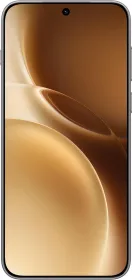vivo has just launched the X300 series in China, building on the success of last year’s X200 lineup with notable upgrades across the board. Also the world’s first smartphones powered by the MediaTek Dimensity 9500 chipset, the X300 series, particularly the base X300 bring a lot of improvements.
The series consists of two models: the compact vivo X300, which serves as a direct successor to the X200 Pro mini with massive upgrades, and the vivo X300 Pro, which brings iterative improvements over the X200 Pro. Let’s dive into the key comparisons and what’s new.
vivo X300: A Massive Leap from the X200 Pro mini (and the X200)

The vivo X300 positions itself as the compact flagship, replacing the X200 Pro mini with significant advancements in nearly every area. Yes, it’s apparently the successor to the X200 Pro mini, not the X200 (review).

It features a 6.31-inch flat BOE Q10+ 8T LTPO OLED ZEISS Master Color display with 1.5K 1216 x 2640 resolution, a 120Hz adaptive refresh rate, 2160 Hz PWM, HDR10+, Dolby Vision, and a peak brightness of 4,500 Nits. The bezels are symmetrical at 1.05mm, with added eye-comfort features like a minimum brightness of 1 nit and dual PWM/DC dimming, improvements over both the X200 and X200 Pro mini’s display setup.

Under the hood, the MediaTek Dimensity 9500 (3nm TSMC N3P process) delivers up to 32% faster single-core and 17% higher multi-core performance compared to the Dimensity 9400 in the X200 Pro mini. It pairs with up to 16GB LPDDR5X RAM and 1TB UFS 4.0 storage.

The battery jumps to 6,040mAh, a notable increase from 5,700mAh, with 90W wired and upgraded 40W wireless charging (vs. 30W on the X200 Pro mini and nothing on the X200).

Camera upgrades are interesting. It boasts a 200MP Samsung ISOCELL HPB main sensor (1/1.4-inch, f/1.68, OIS), a massive upgrade over the 50MP IMX921 used on the X200 but a downgrade in sensor size over the 50MP LYT818 used on the Pro mini.

There’s the same 50MP ISOCELL JN1 ultra-wide (1/2.76-inch, f/2.0, 15mm) and a slightly upgraded 50MP Sony LYT-602 periscope telephoto (1/1.95-inch, f/2.57 3X optical zoom at 70mm, 100X digital, OIS, 15cm tele macro).

The front camera gets a massive upgrade though. It jumps from a 32MP selfie camera with no AF and a narrow field of view to a 50MP ISOCELL JN1 (1/2.76-inch, f/2.0, 20mm) with a 92-degree FOV. Video now includes 4K at 120FPS (1X), a feature absent on the base X200. Some new features include 4K 60FPS cinematic video and 4K Live Photo. It even adds a multispectral sensor this time.

The custom V3+ imaging chip handles processing (major upgrade over the V2), with ZEISS T* coating and modes for portraits, architecture, and more. The optional 2.35X teleconverter extends the telephoto to ~170mm for even greater versatility.

Other small but important include a slimmer 7.95mm metal frame (vs. 8.15mm), weighing 190g, IP68/IP69 rating, NFC, IR blaster, ultrasonic fingerprint sensor 2.0 (previously optical), dual satellite communication (Beidou), Bluetooth 5.4, USB 3.2 Gen1 (previously USB 2.0), universal signal amplifier 3.0, and 4 Wi-Fi wall-penetrating chips.

These changes make the X300 a substantial upgrade, particularly for compact phone enthusiasts seeking pro-level cameras and battery life. In fact, the vivo X300 might be the best compact smartphone from any brand so far.

ALSO READ: vivo X300 and X300 Pro Launched in China: Check Specs, Pricing, and Indian Launch Details
vivo X300 Pro: Refinements Over the X200 Pro
The vivo X300 Pro offers more evolutionary updates compared to the X200 Pro (review), with a 6.78-inch flat BOE Q10+ LTPO OLED ZEISS Master Color display with 1.5K resolution (1260 x 2800), 120Hz refresh rate, HDR10+, Dolby Vision, and 4,500 Nits peak brightness. Bezels slim down to 1.05mm on all sides though.

Powered by the same Dimensity 9500, it supports up to 16GB LPDDR5X RAM and 1TB UFS 4.1 storage (four-lane for faster access). The battery grows to 6,510mAh from 6,000mAh, with 90W wired and 40W wireless charging (up from 30W).



Cameras see targeted improvements: a 50MP Sony LYT-828 main (1/1.28-inch, f/1.57, OIS)—an upgrade from the LYT-818 but the same sensor size—a 50MP ISOCELL JN1 ultra-wide (1/2.76-inch, f/2.0, 15mm), and a 200MP ISOCELL HPB periscope telephoto (1/1.4-inch, f/2.67, 3.7X optical at 85mm, 100X digital, OIS, 15cm tele macro).

The front is now 50MP ISOCELL JN1 (1/2.76-inch, f/2.0, 20mm) with a 92-degree FOV. Video matches the X300 with 8K 30FPS, 4K 120FPS in LOG, and 4K 60FPS cinematic video, bolstered by dual V3+ and VS1 imaging chips for superior processing. ZEISS T* coating, different ZEISS modes, and the 2.35x teleconverter (extending to ~200mm) are also here, along with new features like Zoom Flash from the X200 Ultra. And just like the X300, there’s also a multispectral sensor and support for 4K Live Photo.

Additional features mirror the X300: 7.99mm thick metal frame at 226g, IP68/IP69, NFC, IR blaster, USB 3.2 Gen1, ultrasonic fingerprint 2.0, dual satellite (with a dedicated Beidou edition), Bluetooth 5.4, dual speakers, x-axis motor, and an Action Button that’s new.

While not as transformative as the X300’s changes, the Pro benefits from better battery, wireless charging speed, and refined cameras. It’s still one of the best Pro flagships money can buy.
Summing Up: vivo X200 Series vs X300 Series
| vivo X200 | vivo X300 | vivo X200 Pro | vivo X300 Pro | |
| Display | 6.78-inch micro quad-curved 1.5K 1260 x 2800 LTPS OLED, 120Hz, 4,500 Nits, 2160 Hz PWM | 6.31-inch flat BOE Q10+ 1.5K 1216 x 2640 8T LTPO OLED, 120Hz, 4,500 Nits, 2160 Hz PWM, Dolby Vision, 1.05mm bezels | 6.78-inch micro-curved 1.5K 1260 x 2800 LTPO OLED, 120Hz, 4,500 Nits, 2160 Hz PWM | 6.78-inch flat BOE Q10+ 1.5K 1260 x 2800 8T LTPO OLED, 120Hz, 4,500 Nits, 2160 Hz PWM, Dolby Vision, 1.1mm bezels |
| Processor | Dimensity 9400 | Dimensity 9500 | Dimensity 9400 | Dimensity 9500 |
| RAM/Storage | Up to 16GB/1TB | Up to 16GB/1TB | Up to 16GB/1TB | Up to 16GB/1TB (UFS 4.1) |
| Battery/Charging | 5,800mAh, 90W wired, no wireless charging | 6,040mAh, 90W wired, 40W wireless | 6,000mAh, 90W wired, 30W wireless | 6,510mAh, 90W wired, 40W wireless |
| Main Camera | 50MP IMX921 (1/1.56-inch, f/1.57, OIS, 23mm) | 200MP HPB (1/1.4-inch, f/1.68, OIS, 23mm) | 50MP LYT-818 (1/1.28-inch, f/1.57, OIS, 23mm) | 50MP LYT-828 (1/1.28-inch, f/1.57, OIS, 24mm) |
| Ultra-wide | 50MP JN1 (1/2.76-inch, f/2.0, 15mm) | 50MP JN1 (1/2.76-inch, f/2.0, 15mm) | 50MP JN1 (1/2.76-inch, f/2.0, 15mm) | 50MP JN1 (1/2.76-inch, f/2.0, 15mm) |
| Telephoto | 50MP LYT-600 (1/1.95-inch, f/2.65, 3X, 70mm, 15cm macro, OIS) | 50MP LYT-602 (1/1.95-inch, f/2.57, 3X 70mm, 15cm macro, OIS), + 2.35X to 170mm with teleconverter | 200MP HP9 (1/1.4-inch, f/2.67, 3.7X 85mm, 15cm macro, OIS) | 200MP HPB (1/1.4-inch, f/2.67, 3.7X 85mm, 15cm macro, OIS), +2.35X to 200mm with teleconverter |
| Front Camera | 32MP KD1 (1/3.44-inch, f/2.0, 23mm, no AF) | 50MP JN1 (1/2.76-inch, f/2.0, 20mm, AF) | 32MP KD1 (1/3.44-inch, f/2.0, 23mm, no AF) | 50MP JN1 (1/2.76-inch, f/2.0, 20mm, AF) |
| Video | 4K 60FPS | 4K 120FPS (1X), 4K60 cinematic video, 4K Live Photo, multispectral sensor | 8K 30FPS, 4K 120FPS LOG | 8K 30FPS (1X), 4K 120FPS LOG (1X, 3.7X), 4K60 cinematic video, 4K Live Photo, multispectral sensor |
| Imaging Chip | V2 | V3+ | V3+ | V3+ & VS1 |
| OS | OriginOS 5 / Android 15 | OriginOS 6 / Android 16 | OriginOS 5 / Android 15 | OriginOS 6 / Android 16 |
| Other | IP68/69, optical FP, NFC, IR, USB 2.0 | IP68/69, ultrasonic FP 2.0, NFC, IR, satellite, BT5.4, USB 3.2 Gen 1 | IP68/69, ultrasonic FP, NFC, IR, USB 3.2 | IP68/69, ultrasonic FP 2.0, NFC, IR, satellite, BT5.4, USB 3.2 Gen 1, Action Button |
| Thickness/Weight | 7.99mm/197g/202g | 7.95mm/190g | 8.2mm/223g or 8.49mm/228g | 7.99mm/226g |
| Starting Price (CNY) | ¥4,299 (12/256GB) | ¥4,399 (12/256GB) | ¥5,299 (16/512GB) | ¥5,299 (16/512GB) |
An India launch of the X300 series is expected by November or December 2025. The X300 series elevates vivo’s flagship game, especially in the compact segment with the X300’s massive overhauls. What are your thoughts on these upgrades? Let us know in the comments below.

You can follow Smartprix on Twitter, Facebook, Instagram, and Google News. Visit smartprix.com for the latest tech and auto news, reviews, and guides.



































Please 2 step account active Vivo y12a 2102